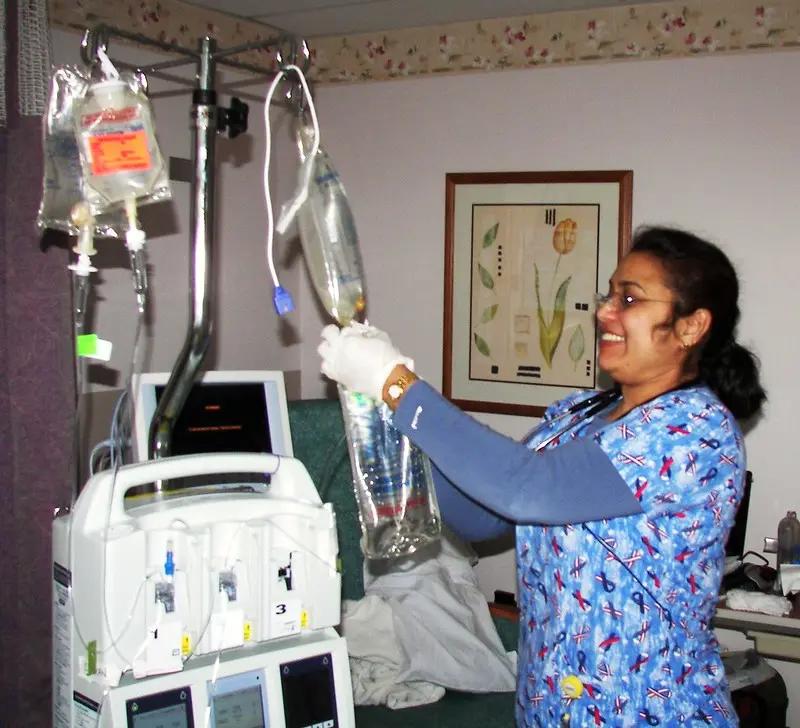First mixed-race woman experiences possible HIV cure after stem cell transplant
The patient, referred to as the “New York patient,” was treated with stem cells from cord blood, and has remained HIV-free in her blood since her transplant in 2017.
A middle-aged woman who identified as mixed race has experienced HIV-1 remission and possibly even a cure after undergoing a haplo-cord blood transplant. The patient was in remission for approximately 18 months removed from antiretroviral therapy (ART) and without graft.
The results were published in Cell.
For the purposes of keeping her identity private, the study investigators are referring to her as the New York patient. The patient developed acute myeloid leukemia (AML) 4 years after her HIV diagnosis and was actively taking ART. The investigators reported 100% immune reconstitution by CCR5Δ32/Δ32 (CCR5-delta32) cord graft and resistance to HIV strains.
This particular case is unique for a few reasons including utilizing stem cells from cord blood, the patient was a woman, and that this is the first person who identified as mixed-race who may have been clinically cured of HIV.
Stem cell transplantation with CCR5-delta32 is rare because of the exceedingly low prevalence of CCR5-delta32 in the population, the investigators wrote. Only around 1% of white people are homozygous for the CCR5-delta32 mutation and it is even rarer in other populations. This rarity limits the potential to transplant stem cells carrying the beneficial mutation into patients of color because stem cell transplants usually require a strong match between donor and recipient.
Four previous cases of men were reported to be clear of HIV after undergoing stem cell transplants as part of their cancer treatments. In all these cases, the donor cells came from compatible or “matched” adults carrying two copies of the CCR5-delta32 mutation, a natural mutation that confers resistance to HIV by preventing the virus from entering and infecting cells.
Knowing it would be almost impossible to find the New York patient a compatible adult donor with the mutation, the team instead transplanted CCR5-delta32/32-carrying stem cells from banked umbilical cord blood to try to cure both her cancer and HIV simultaneously.
“Using cord blood cells broadens the opportunities for people of diverse ancestry who are living with HIV and require a transplant for other diseases to attain cures,” said Yvonne Bryson, MD, professor of pediatrics and chief of pediatric infectious diseases at the David Geffen School of Medicine at UCLA who co-led the study along with Deborah Persaud, MD, professor of pediatrics at the Johns Hopkins University School of Medicine.
The patient received her transplant in 2017 at Weill Cornell Medicine in New York, and the umbilical cord blood cells were infused alongside stem cells from one of the patient’s relatives to increase the procedure's chances of success. “With cord blood, you may not have as many cells, and it takes a little longer for them to populate the body after they're infused,” Bryson, explained. “Using a mixture of stem cells from a matched relative of the patient and cells from cord blood gives the cord blood cells a kick start.”
Although this case proves the ability to treat for both HIV and blood cancers simultaneously, it cannot be seen as a potential standalone HIV cure.
“Because of the invasiveness of the procedure, stem cell transplants (both with and without the mutation) are only considered for people who need a transplant for other reasons, and not for curing HIV in isolation,” Persaud said. “Before a patient can undergo a stem cell transplant, they need to undergo chemotherapy or radiation therapy to destroy their existing immune system.”

This article was published by our sister publication Contagion Live.
FDA grants 510(k) clearance to cobas liat STI multiplex assay panels
Published: January 22nd 2025 | Updated: January 22nd 2025The new panels, leveraging rapid polymerase chain reaction technology, allow point of care sexually transmitted infection diagnosis in 20 minutes, enhancing targeted treatment and reducing follow-up losses.
Read More
Study finds lack of testing for gonorrhea, chlamydia during pregnancy
August 15th 2024Adherence to guideline-based laboratory testing and treatment of chlamydia and gonorrhea in pregnant women has been found to be suboptimal in the United States, indicating the potential for negative effects on newborn and maternal health.
Read More
